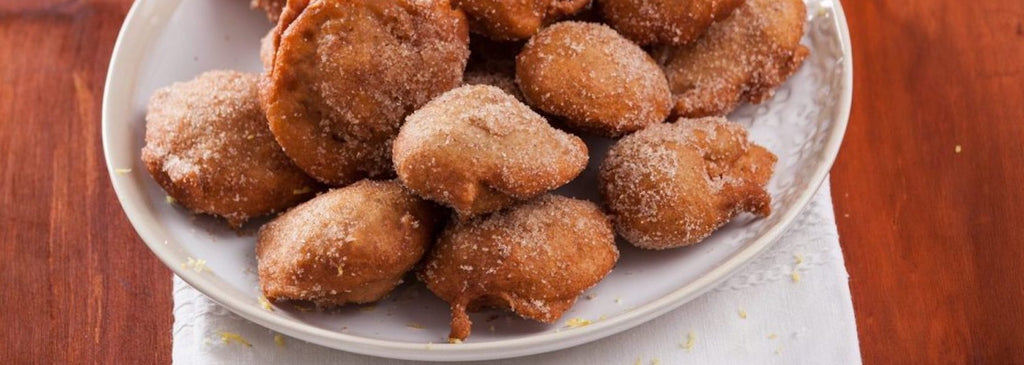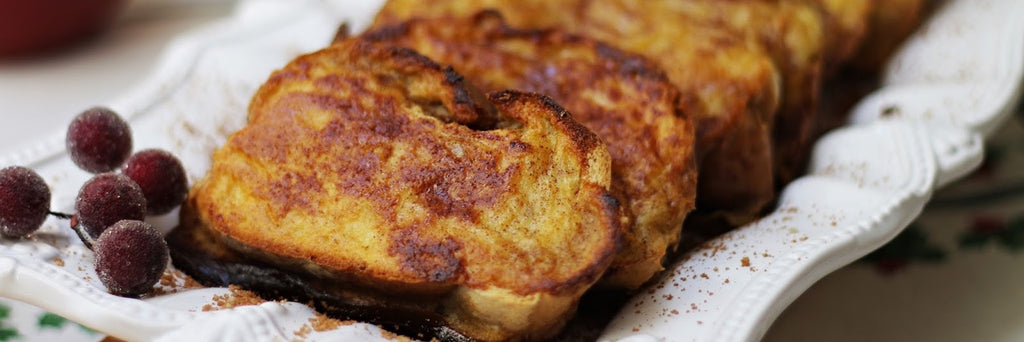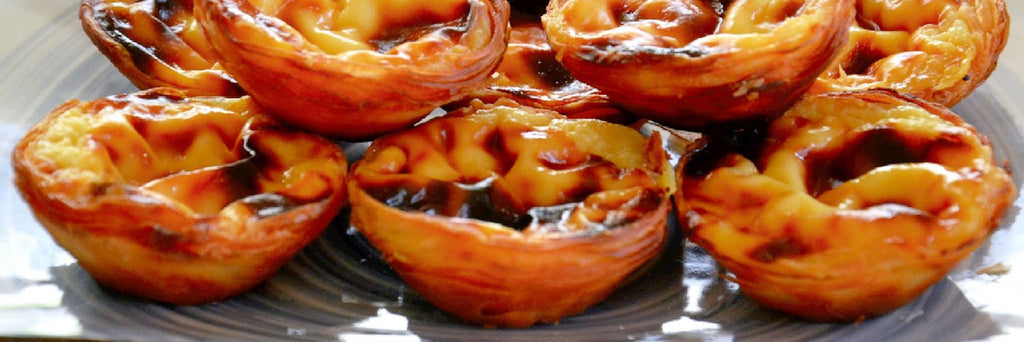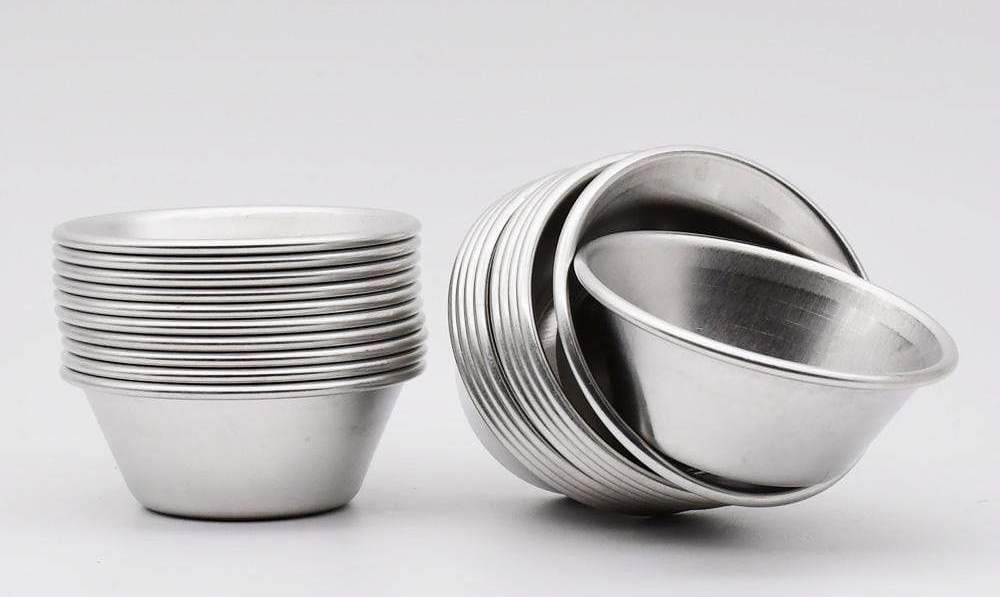1 - Bolo Rei
Bolo Rei (King's Cake) is a crown-shaped cake made of a soft white dough mixed with raisins, nuts, and candied fruit.

Ingredients (Serves 12)
- 750g of flour
- 120g of sugar
- 120g of butter
- 40g of yeast
- 200cl of water
- 3 large eggs
- 1 orange peel
- 150g of candied fruit
- 200g of dried fruit (pine nuts, almonds, walnuts, raisins)
- 3 tablespoons of Brandy or Rum or Aguardente.
- Butter, flour and beaten egg for preparation
- Salt
- Candied fruit slices, candied cherries, walnut kernels and powdered sugar for decoration
- In a bowl, mix the candied fruit with the chopped dried fruit. Add the brandy. Let stand.
- In another bowl, mix the yeast with water.
- Pour the flour on the work surface and dig a well. Add a pinch of salt, sugar, butter, orange zest, eggs and yeast mixture.
- Mix everything together and knead the dough until it comes away from the table and from your hands.
- Add the fruit, mix again and work the dough again, sprinkling flour over it.
- Make a ball of dough and place it in a floured bowl. Cover with a Portuguese cloth (very important, Portuguese the cloth) and let it rest until it triples in volume.
- Then place the dough on the floured worktop. Form a ball and make a hole in the centre and then form a circle.
- Place the dough on a greased baking sheet and leave to rest for another 40 minutes.
- Preheat the oven to 180º. Brush the dough with a beaten egg and decorate with the fruit and powdered sugar.
- Bake in the oven for 40 minutes. Leave to cool and serve.
- Portuguese cooking utensils
2 - Bolo Rainha
The Bolo Rainha (Queen's Cake) is a version of the Bolo Rei (King's Cake) without candied fruit.

Ingredients (Serves 12)
- 750g of flour
- 120g of sugar
- 120g of butter
- 40g of yeast
- 200cl of water
- 3 large eggs
- 1 orange peel
- 200g of dried fruit (pine nuts, almonds, walnuts, raisins)
- 3 tablespoons of Brandy or Rum or Aguardente.
- Butter, flour and beaten egg for preparation
- Salt
Directions
- Place the dried fruit in a bowl with the brandy (or rum or aguardente). Let it rest.
- In another bowl, mix the yeast with water.
- Pour the flour on the work surface and dig a well. Add a pinch of salt, sugar, butter, orange zest, eggs and yeast mixture.
- Mix everything together and knead the dough until it comes away from the table and from your hands.
- Make a ball of dough and place it in a floured bowl. Cover with a Portuguese cloth (very important, Portuguese the cloth) and let it rest until it triples in volume.
- Then place the dough on the floured worktop. Form a ball and make a hole in the centre and then form a circle.
- Place the dough on a greased baking sheet and leave to rest for another 40 minutes.
- Preheat the oven to 180º. Brush the dough with a beaten egg and decorate with dried fruit and powdered sugar.
- Bake in the oven for 40 minutes. Leave to cool and serve.
3 - Arroz Doce
The Arroz Doce (Rice pudding in English) is a sweet dessert consisting mainly of rice cooked in sweet milk and served lukewarm or cold.

Ingredients (Serves 8)
- 1l semi-skimmed milk
- 200g caster sugar
- 200g of rice
- 1 teaspoon of salt
- 1 lemon zest
- 3 egg yolks.
- Ground cinnamon
Directions
- Cook the milk, sugar, rice and a pinch of salt in a saucepan. When the mixture boils, add the lemon zest.
- Cook over low heat, stirring occasionally until the rice is cooked through but still frothy.
- Loosen the egg yolks with a fork in a bowl, add a little cooked rice, stir and mix in the pan.
- Return to the heat, now very low, and stir for about a minute.
- Remove from the heat and divide into individual bowls or a deep dish.
- Once cold, sprinkle with cinnamon.
4 - Filhós
Filhó is a simple fritter made of flour and eggs, sometimes also pumpkin and orange peel, fried in olive oil or other vegetable oils. It is often sprinkled with sugar and cinnamon.

Filhó is a Portuguese gastronomic specialty, also common in Brazil. The Brazilian variety is traditionally fried in lard and instead of being sprinkled with sugar, filhó is eaten garnished with honey.
Ingredients (Serves 8)
- 1kg of flour
- 2 spoons of yeast
- 30 ml Brandy, Aguardente or Rum
- 10cl semi-skimmed milk
- 10 eggs
- 10cl olive oil
- 100g of sugar
- 1 tablespoon powdered cinnamon
Directions
- In a salad bowl, add the flour, baking powder, salt and mix well.
- Add the Brandy (Aguardente or Rum) and the milk.
- Start kneading with your hands.
- Add the eggs one by one and continue to knead carefully.
- When everything is well kneaded, grease your hands with olive oil and continue working the dough until it no longer sticks to the bowl.
- Continue kneading for another 2 minutes.
- Cover the bowl with a Portuguese tea towel and leave to rest for 2 hours.
- Form small flat balls and fry them in very hot oil.
- Sprinkle with sugar and cinnamon and serve.
5 - Fatias douradas
This typical Christmas recipe is one of the simplest, fastest and most economical to make. It takes only a few minutes and will gladly use any type of bread and ingredients left over from a Christmas meal.

The Fatias douradas have several names, depending on the region of Portugal. The most common name is indeed Fatias douradas (Golden slices in English) but some people also call it Rabanadas.
Ingredients (Serves 4)
- 6 to 8 cups of milk
- 1 stick of cinnamon
- 1 or 2 lemon peels
- 8 slices of bread (or any other bread of your choice)
- 8 beaten eggs
- Sugar and cinnamon powder
- 1dl of oil
Directions
- Put the milk on the heat with a cinnamon stick and lemon zest. Let it boil.
- Beat the eggs in a soup plate or deep dish.
- When the milk boils, pour it also into a soup plate or deep dish.
- Dip the slices of bread in the milk plate and then in the plate of beaten eggs.
- Fry the slices of bread in a frying pan.
- Prepare a plate with sugar and cinnamon, then pass the slices of bread on both sides.
6 - Fios de Ovos

Ovos Fios are simple to make. The principle is to pour yolks into a hot sugar syrup, the syrup coagulates the yolks and you just have to create the texture in threads.
Ingredients
- 5 egg yolks
- 500gr of sugar
- 500ml of water
Directions
- Separate the yolks and pass them twice through an Ovos funnel.
- Pour the water and sugar into a large saucepan and bring the mixture to the boil.
- Fill the funnel in Fios de Ovos with the egg yolks and let them flow into the pan in rapid circular movements.
- Remove the threads thus created with a strainer and repeat the process until the yolks are used up, adding water to the syrup whenever it becomes too thick.
- At the end, separate the threads with a fork and sprinkle with the rest of the syrup.
Totally unclassifiable, totally impossible to find outside Portugal, this kitchen utensil is indispensable for preparing fios de Ovos, also called "yolks spun" in english
7 - Pão de ló
Pão de ló (Sponge Bread in english) is a typical Portuguese cake made of eggs, sugar and flour.

Pão de ló is a very old Portuguese cake whose first recipe is recorded in the 16th century. It was then made in clay moulds and baked over a wood fire. Nowadays, Pão de ló is eaten all year round, but especially during Easter and Christmas.
Ingredients
- 12 egg yolks
- 8 egg whites
- 150 g sugar
- 150 g flour without yeast
- 1 pinch of salt
Directions
- Preheat the oven to 180°C with the mould inside.
- Whisk the egg whites until stiff.
- Beat the egg yolks with salt and sugar for 10 minutes.
- Add the flour to the egg yolks and beat again.
- Gently fold in the egg whites.
- Remove the pan from the oven and pour the dough into it.
- Bake for about 15 minutes.
- Remove the pan from the oven and leave to cool for 10 minutes before unmoulding.
It is best to bake the Pão de ló in a mould with a central dome and a lid to make it tastier.
8 - Pudim de Ovos
Pudim de Ovos (Egg Pudding in english) is a dessert made of eggs, milk and sugar with a caramel syrup on top.

Pudim de Ovos is a very old dessert dating back to Roman times that became very popular in the Middle Ages and was traditionally served during Lent.
Ingredients
- 1l of milk
- 12 eggs
- 500g of sugar
Directions
- Mix the eggs with the sugar until smooth.
- Slowly add the milk and continue stirring.
- Pour the mixture into an Ovos Pudim mould and place it in a bain-marie in a large saucepan.
- Leave to cook for 20 minutes.
- Mix the sugar and water in another saucepan. Heat to obtain caramel.
- Unmould the Ovos Pudim and cover with caramel.
9 - Pasteis de Nata
Pasteis de Nata are undoubtedly the most successful pastry of the Portuguese pastry industry. They are now found all over the world, even in the streets of Paris and New York and also in supermarkets and hypermarkets.
BUT Pasteis de Nata is really excellent only when eaten warm, just out of the oven and just sprinkled with a little cinnamon. So, to your ovens!

Ingredients (10 to 12 Pasteis)
- 250 g puff pastry
- 1/2 litre of milk
- 6 egg yolks
- 40 g flour
- 180 g sugar
- 1 piece of butter
- 1 cinnamon stick
- 12 Nata pasteis moulds
Make the dough
- Flour your work surface and roll out the dough into a large rectangle.
- Brush this rectangle with butter.
- Roll the rectangle on itself to obtain a dough roll.
- Cut out 12 pieces of about 1.5cm high and flatten them between your fingers.
- Place the circles of dough thus obtained in the previously buttered moulds.
Make the custard
- Pour the milk into a saucepan, add the sugar and dilute the flour cold.
- Add a cinnamon stick.
- Heat the mixture and stir until thick and creamy.
- Let the preparation cool a little before whisking in the egg yolks.
Assemble and bake
- Fill each of the moulds with the cream preparation.
- Place in the oven at 200° and cook for 15 to 20 minutes.
- Take the Pasteis out of the oven, remove them from the mould and leave to cool for 10 minutes.
- Serve lukewarm and sprinkle with cinnamon.
Of course, finding Pasteis de Nata baking tins outside Portugal is an impossible mission. You may decide to make do with cupcake moulds, but in that case, you will have difficulty getting the crispness of the puff pastry. Don't panic, for a few euros, you will find on my site the original Pasteis de Nata baking tins made in Northern Portugal!
10 - Baba de Camelo
Baba de Camelo (Camel's Slime in english) is a typical Portuguese dessert made of condensed milk and eggs.

Ingredients
- 1 400g can of sweetened condensed milk
- 5 eggs
- Slivered almonds
Directions
- Place the unopened can of sweetened condensed milk in a pressure cooker. Add water up to half the height of the can.
- Close the pressure cooker and leave to cook for 45 minutes.
- Take out the can of sweetened condensed milk and leave it to cool.
- Separate the egg whites from the yolks. Mix the yolks and the sweetened condensed milk with a whisk.
- Whisk the egg whites until stiff and fold in gently.
- Divide into individual containers, sprinkle with slivered almonds and place in the refrigerator.
11 - Bolo de Bolacha
The Bolo de Bolacha is a traditional Portuguese cake, without baking, made of different layers of Maria biscuits and butter cream.

The origin of Maria biscuits is English. They were invented by the Freans Peek Industrial Company in 1874 in honour of the marriage of Prince Alfred, Duke of Edinburgh and Duchess Maria Alexandrovna of Romania, daughter of Emperor Alexander II of Russia. This biscuit is served as a teatime snack in Portugal, but also in Spain, Mexico, Australia, India and South Africa.
Ingredients (serves 6)
- 300g of Maria biscuits (or any other type of dry biscuit)
- 25cl coffee
- 3 egg yolks
- 250g of sugar
- 250g of butter
Directions
- Mix butter and sugar and knead until smooth and creamy.
- Add the egg yolks and continue mixing to obtain a smooth and creamy cream.
- Dip the Maria biscuits in the coffee and arrange them in a single layer at the bottom of a dish.
- Cover with a layer of cream and then again with a layer of soaked biscuits and so on, finishing with a layer of cream to cover the whole cake.
- Leave to stand for 3 to 4 hours in a cool place.
- Sprinkle with Maria cookie crumbs before serving.
12 - Bola de Berlim
Berlim's Bola is a kind of doughnut topped with egg cream.

The recipe for Berlim's Bola was brought by German Jewish families who, at the time of the Second World War, took refuge in Portugal. However, this cake originally filled with a jam based on red berries was adapted to Portuguese tastes and today is mainly filled with an egg cream.
Ingredients (for 12 Berlim bolas)
- 700g of flour
- 3/4l semi-skimmed milk
- 250g of sugar
- 100g of margarine
- 30g of yeast
- 4 eggs
- 4 egg yolks
- 1 lemon zest
- Salt
- 1/2l vegetable oil (for frying)
Directions
- In a large bowl, pour 600g of flour, dig a well and put the hot milk, sugar and yeast in it. Mix and knead until completely dissolved.
- Dig a new well and add the 4 eggs, margarine and a pinch of salt. Mix again until completely integrated.
- When the dough is homogeneous, knead on a work surface, sprinkling flour regularly.
- Arrange the dough in a bowl, cover with a cloth (a Portuguese cloth, otherwise the dough will not rise) and leave to rest for 2 hours until the dough has doubled in volume.
- Divide the dough into 12 equal parts, shape into balls and place them on a floured tray and leave to rest again for 1 hour.
- Meanwhile, prepare the filling. Mix the sugar, flour, yolks and cold milk in a bowl.
- Boil the remaining milk with the lemon zest and pour over the mixture, stirring constantly.
- Bring to a boil until thickened. Remove from heat and let cool.
- Take the 12 balls of dough and fry them in oil. Turn them over halfway through cooking and drain.
- Cut the balls in half. Fill with cream and sprinkle with fine sugar.
13 - Pão de Deus
The Pão de Deus (God's bread in English) is a kind of brioche with a coconut couverture.

Ingredients (for 12 loaves of God)
- 600 g flour
- 0.3l milk
- 2 eggs
- 100 g sugar
- 100 g butter
- 25 g of yeast
- 100 g grated coconut
- Semolina sugar
Directions
- Dissolve the yeast in a little warm milk, cut 100g of butter into pieces and leave them to soften.
- Pour the 600g of flour into a large bowl, dig a well and put the sugar, egg, milk and yeast in it. Mix and knead.
- Incorporate the butter and continue to knead until you obtain a homogeneous and non-sticky dough.
- Place the dough in a bowl, cover with a Portuguese cloth (otherwise the dough will not rise) and leave to rest for 2 hours until the dough has doubled in volume.
- Shape the loaves of God then let them rest again for 1 hour.
- In a salad bowl, mix the second egg, the grated coconut and 2 tablespoons of sugar.
- Mix one yolk with two tablespoons of water, brush the loaves of God with the mixture and place the coconut cover on top of the loaves.
- Preheat the oven to 180° and bake for about 15 minutes.
If you wish to go further and discover the traditional Portuguese cuisine, I recommend the book "Portugal at the table" written by simple Portuguese cooks (not chefs) and translated into English. Through its 130 pages, this beautiful book offers nearly 70 very detailed traditional Portuguese recipes as well as wine suggestions: Petiscos, soups, fish, seafood, meats and desserts, everything is there to make your Portuguese recipes a success. Authors: Susana Moreira do Vale, Maria Fernanda Veloso, Pedro Rodrigues - 128 pages in glossy





